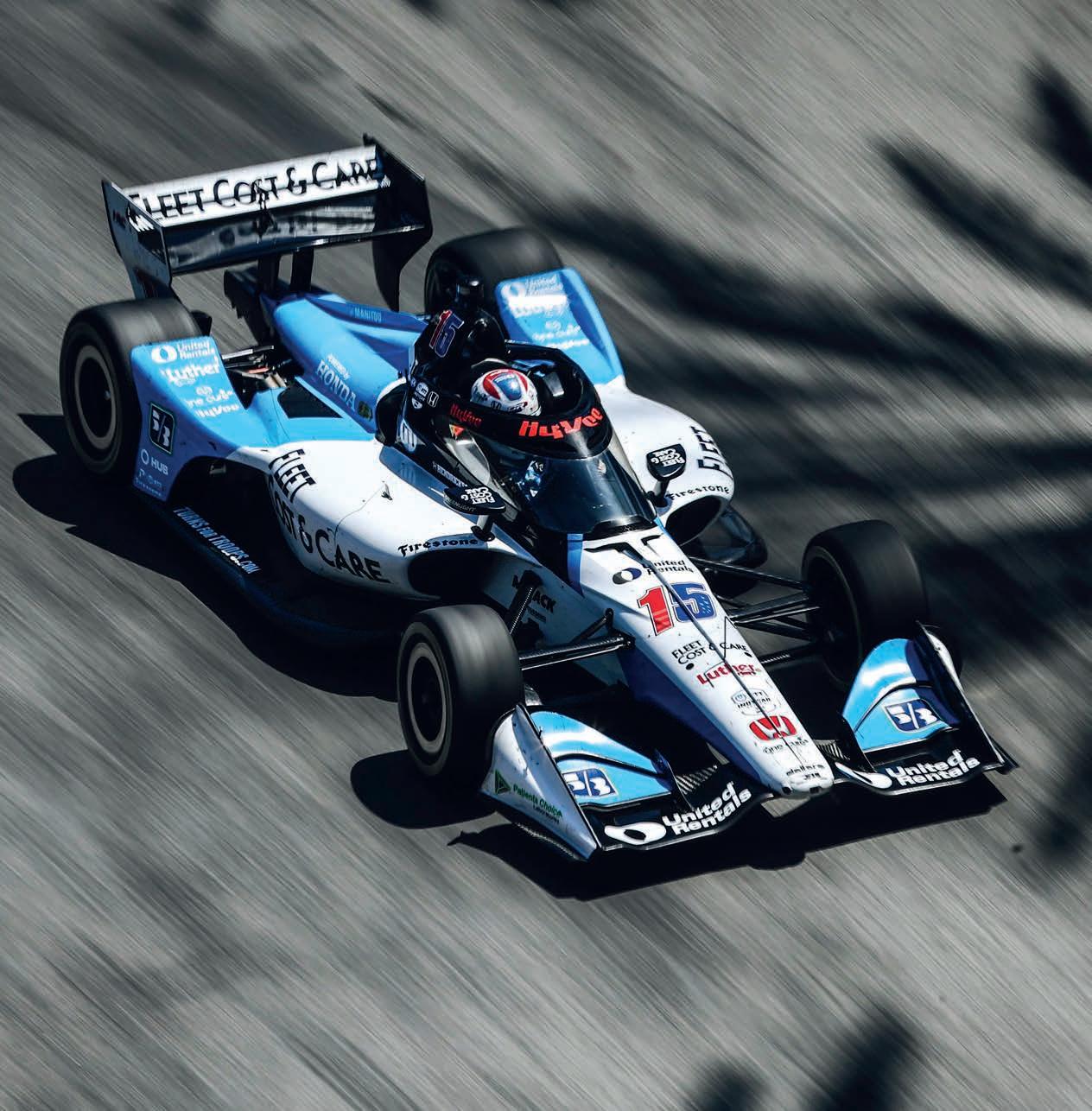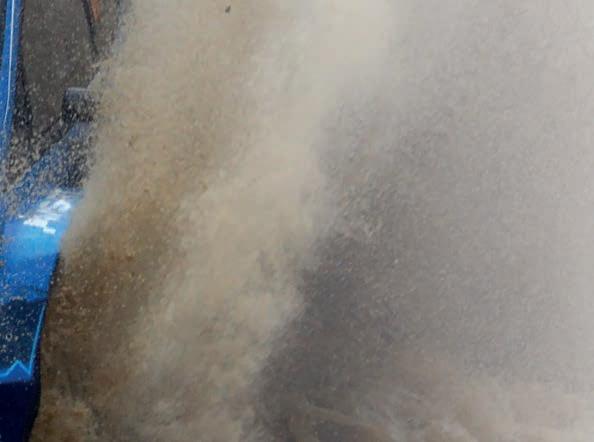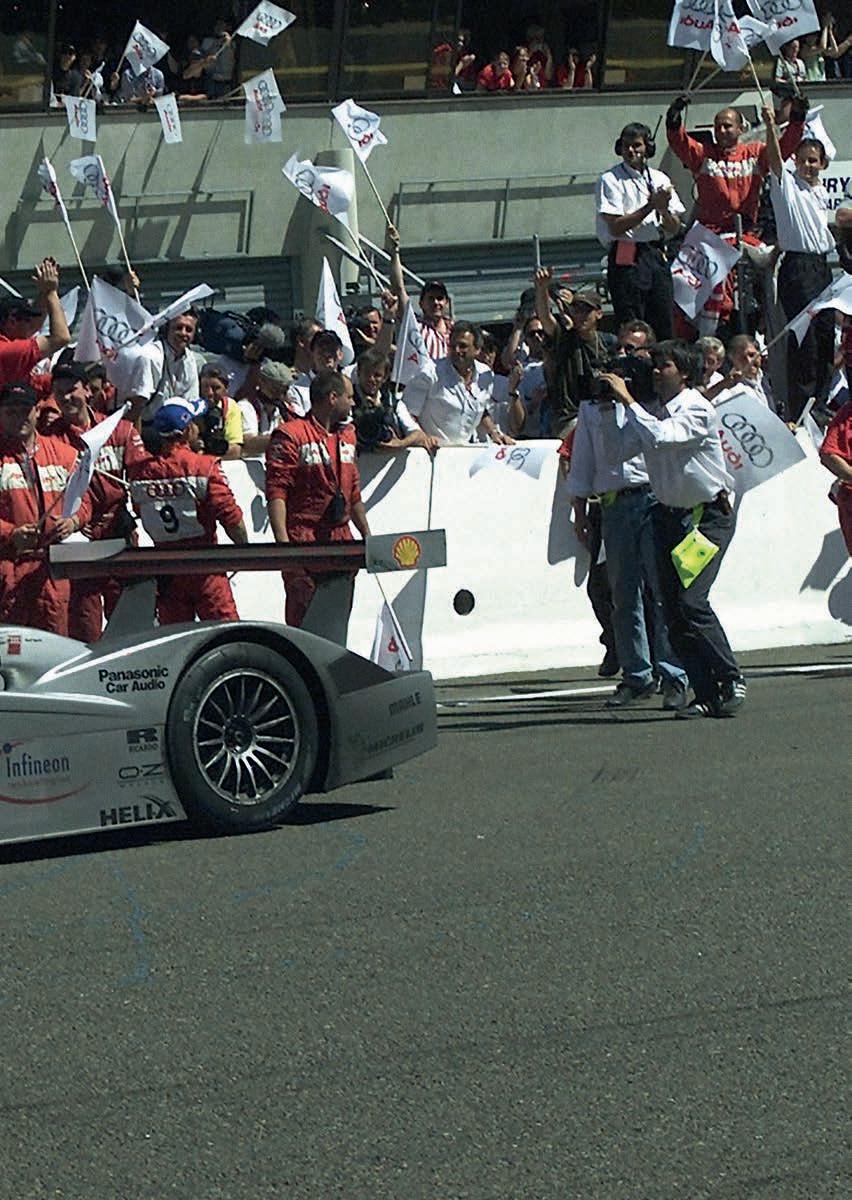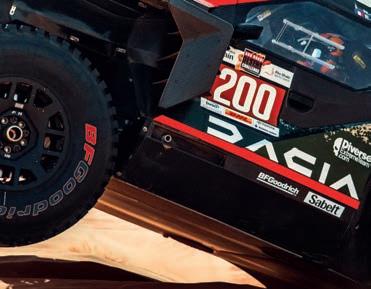HYDROGEN Solid-state storage and an ambitious plan to attack Pikes Peak in 2026
Inside the world of modern motorsport technology

HYDROGEN Solid-state storage and an ambitious plan to attack Pikes Peak in 2026
Inside the world of modern motorsport technology
Preparing for the first Indy 500 with electric power

Formula E
How fast charging works and its strategic impact
Super Formula
Teams get to grips with more sustainable tyre
ENGINEERING THE DRIVER
New earpiece sensor to monitor core temperature
ROBERT WICKENS
Bosch’s innovative hand control system explained
FUTURE OF LMP2
Fog begins to clear as tender details released


This year’s Indianapolis 500 will be the first run with hybrid technology. IndyCar engine chief, Darren Sansum, takes us through what to expect
By ANDREW COTTON


Motorsport electronics need to be hi-tech, lightweight and close to indestructible. Life Racing explains how it balances these often contradictory requirements
By MIKE BRESLIN

Life Racing supplies electronics to M-Sport’s Rally2 programme, among others, meaning its products are pushed to the very limit

Sometimes it’s tempting to compare a racecar to a human being. After all, it has four ‘limbs’, a body and a thumping heart, which we call an engine. But a person is nothing without a brain and, in a racecar context, this is where the grey matter of the little black box and the twisting nerves in the wiring harness come into play.
These electronic elements bring a modern racecar to life, and perhaps this was in Mike Lancaster’s mind when he named his then new venture, Life Racing, in 2002 –though he says he cannot recall how the name originated. What is for sure, though, is that Life has since become one of the UK’s most respected and successful motorsport electronics companies.


engine company that had that very DNA built into it because, at that time, a lot of engine companies were designing engines without the electronics in mind.
‘The electronics can work around problems, particularly knock control in those days, and better turbocharger control. AER has still got much better turbo control than everybody else, because we developed those things in concert with the engine.’
These days, while Life manufactures the whole gamut of motorsport electronics products, the bread and butter of the operation is the design and manufacture of what Andrew Saunders, senior engineer of technical sales, calls ‘black boxes’, by which he means components like ECUs and PDUs (power distribution units).
Indeed, Life’s products are now at the heart – or rather brain – of a wide selection of international and national-level competition vehicles, including Indy NXT, rally cars from M-Sport and Renault, Hyundai TCRs, Radicals and Revolutions, plus a growing number of high-end road cars.
Life Racing has also had a very successful involvement in top-level sportscars, largely through its connection with well-known engine builder, AER. The two companies operate out of the same sprawling base on an industrial estate in Basildon, Essex, and Lancaster is the managing director of both, yet they are entirely separate entities.



Life’s life story is a little complicated but, essentially, Lancaster co-founded another electronics company, Pectel Control Systems, and then, together with his partner in Pectel, set up AER. The pair then went their separate ways, Lancaster keeping the engine business, his partner the electronics side, supplying into AER. When Pectel was later bought by Pi Research, Lancaster found himself in a position where he needed to set up his own motorsport electronics rm.
There was a very good reason for this, as Lancaster explains: ‘One of the points of AER was that the engines were developed in concert with modern electronics. They were not engines where you apply the electronics after the fact. I thought we could start an
Saunders was originally an engine man. He worked for Ilmor and was there through its evolution into Mercedes-Benz HPP, before moving to AER and then transferring to Life around ve years ago. However, he is keen to point out that at Life the term ECU refers to far more than just ‘engine’ control units.
‘When people refer to an ECU, it can be an engine control unit or an electronic control unit,’ Saunders says. ‘I think it’s an electronic control unit, but I also think nowadays it would probably be better if it was called a powertrain control unit. If you designed a basic ECU to just run a four-cylinder engine, it would probably be half the size of our F88 [Life’s entry-level ECU] because it’s only got four injectors and four coils. That’s all it has to do. But our device has got 88 pins.
‘With our ECUs, as well as running the engine, we can run seamless sequential gearbox control, anti-lag control and there’s another part of the ECU that’s o controlling the wastegate. We’ve also got a very good traction control system. All of these systems sit within the same control unit. One of the reasons for this is that what most of those systems demand at some point is a change in engine torque behaviour.’

To give an example, Life’s high end F90F ECU can look after a wide range of powertrain tasks including turbocharging, supercharging, drive-by-wire, variable valve timing and VTEC, as well as the gearbox, di erential and many other functions on a racecar.
‘When people refer to an ECU, it can be an engine control unit or an electronic control unit… but nowadays it would probably be better if it was called a powertrain control unit’
Andrew Saunders, senior engineer of technical sales at Life Racing

Audi’s
dominance defined the 24 Hours of
Le Mans
at
the turn of the millennium. A quarter of a century on from its first triumph, we look at the iconic Audi R8
By ANDREW COTTON

Audi is one of the most successful car companies at the 24 Hours of Le Mans, having won 13 of the 25 editions held this century. Making that statistic all the more incredible is the fact the German manufacturer withdrew after 2016, leaving it with a 72 per cent success rate at the famous endurance race. Only Porsche has won more, but its count of 19 started much earlier in 1970.
Audi’s era of achievement at Le Mans began in 2000, with the first iteration of the R8. That win was the first of three in succession, while customer teams then added two more before the now legendary car was replaced by the diesel-powered R10 in 2006.
The German manufacturer ran through several phases with its endurance programme, starting with the R8R that debuted at Sebring in 1999. That morphed into the re-designed R8 for the 2000 season, which firmly established Audi’s sportscar credentials in Europe, the US and at Le Mans.
After that came the diesel cars, starting with the R10 and R15, before the move to hybrid electric power with the R18. In that time, Audi shaped the most famous 24-hour race of all and, in doing so, defined an era of sportscar racing.
However, it was not a straightforward process at the beginning in the 1990s. Audi had long been interested in endurance racing, and initially looked at building a GT2 car. Out of that came the idea of a GT1 programme, with a view to racing in the FIA GT Championship. Audi in Germany gave serious consideration to both plans but, ultimately, they were canned in favour of building a prototype to compete for overall victory at the 24 Hours of Le Mans.
Prior to the development of the bespoke endurance racers, Audi had only previously built cars from production bodyshells. That included the DTM, IMSA, touring cars and rallying. All were successful projects in their own right, but none that started with a clean sheet of paper-designed carbon monocoque. There was no previous knowledge within the company of Le Mans prototypes, so it was no great surprise that Audi’s first car, the R8R, showed a design that closely mirrored that of another manufacturer.
The number of designers involved in the development of the Ferrari 333 SP is rather large, but one name stands out: Tony Southgate. The British designer worked on the 333 SP before moving to Audi, and the similarities between the two cars are clear to see. Both the Ferrari and the Audi R8R featured a double roll hoop over an open cockpit; both housed the radiator in the nose of the car; both had a non-stressed engine and both used carbon chassis built by Dallara.

The standard Corvette Z06 GT3 racecar has paddles on either side of the steering wheel, each capable of upshifts and downshifts. In the Hyundai, Wickens primarily applied throttle with his right hand and upshifted with his left, and then applied the brake with his left hand and downshifted with his right. However, certain corners on certain tracks made that difficult and so when the system was switched to the Corvette, and paddles for throttle and brake were
introduced, Wickens has set himself the target of retraining himself to use either hand for whatever function the car needs.
The paddles for the braking system are controlled by a damper that runs across the top of the steering wheel, which can also be set up for optimum performance, in the similar way to a suspension spring. Performance, in this case, is tuning brake feel.
‘Before, he had to pull harder on the brake rings to generate full pressure… whereas now that force input curve is quite a bit less’
Jordan Krell, senior engineer at Bosch Motorsport

‘It still needs to be enough force for him to be able to actuate and control the pressure, but it’s less on the GT3 system [than the TCR],’ says Krell. ‘So that’s where the biggest difference is in latency between last year’s system and this year’s.’
As the LMDh car is a hybrid, the braking system is electronic. That is to mask the different feel on the brake pedal when the battery is harvesting energy, which reduces the pressure on the pads and discs.
The Corvette, on the other hand, has, by homologation, an hydraulic braking system operated by the foot pedal. This is used by Wickens’ team mate at Long Beach, Tommy Milner. Other drivers will compete with Wickens in other races during the year.
Wickens’ electronic system therefore sits alongside the hydraulic one, but either remains passive when it is not needed. During a driver changeover, the incoming driver flicks a switch in the cockpit to
determine which is used. While the switch changes the primary controls, it does not carry over to items such as brake bias. That still has to be manually adjusted.
‘We found that you have to switch your mindset away from pressure to torque,’ says Krell. ‘You are looking at the torque you are generating between the front and the rear axle. With this system, you are not feeding hydraulic pressure into it, you are generating pressure with it, based on request.
The FIA Foundation has funded a safety initiative to help prevent spinal injuries in rally raid events
By RACECAR STAFF
Bouncing over the sand dunes in Saudi Arabia on the 2025 Dakar Rally, Dacia Sandrider crews were testing in real-world conditions a new FIA safety initiative designed to prevent back injuries following heavy vertical impacts. Crews have, in the past, faced signi cant load and injury from the shock transmitted through the car and into the occupants during heavy, or sudden, impacts. Consequently, the FIA has invested in research to improve driver safety in o -road competition.
Attaching seat attenuators to racecar seats is not a new idea. The University of Turin conducted a similar study in 2010 on a Formula Student car that complies to the 2008 regulations, with positive results. However, in the latest study, the FIA has taken real-world data and applied it in simulation to produce this improved safety feature.

The basis for the study was the FIA Foundation, which co-funded a research project looking at preventing competitors from su ering spinal injuries. The aim was to nd a way to mitigate the consequences of heavy landings, which cause compressive loads to be transferred to the occupants’ spine. As part of the motorsport safety technical research programme, the FIA undertook the project with a number of key stakeholders, and began real-world testing in 2024, with immediately positive results.
Using data from incidents involving a heavy landing, which are recorded in the FIA’s World Accident Database, experts de ned a representative ‘severe crash pulse’ of 40g, orientated at an angle of 58 degrees from the horizontal axis, as a target for the project to mitigate against.
Experts de ned a representative ‘severe crash pulse’ of 40g, orientated at an angle of 58 degrees from the horizontal axis, as a target for the project to mitigate against










